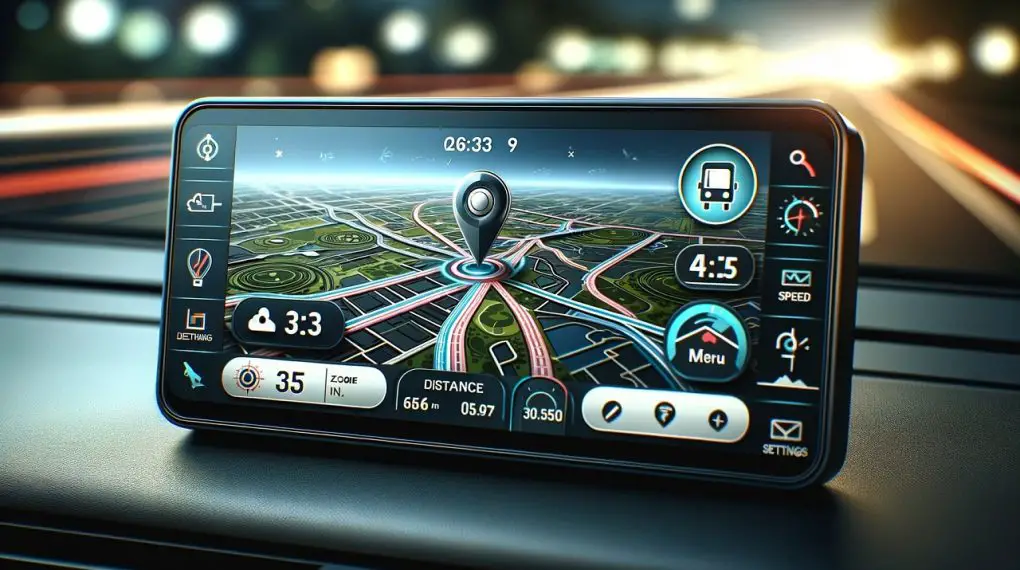If you find your GPS route not working, it can disrupt your travel plans. This article provides a detailed, step-by-step guide to help you identify the issue and find a solution to get your GPS routing back to its optimal functionality. We will walk you through the most common GPS troubleshooting steps, ensuring that even if you’re a novice, you’ll have the tools to address the problem.

Check Your GPS Signal
When initiating a journey, your GPS signal is pivotal for reliable navigation. A strong GPS signal depends on an unobstructed line of sight between your GPS device and multiple satellites orbiting the Earth. Without this, you may find your GPS route not working correctly. Here’s what you should look into:
Obstructions: Start by checking your surroundings for tall structures, dense tree canopies, or high terrain features that could block signals. Urban canyons created by high-rise buildings can particularly disrupt signal continuity.
Device Placement: The position of your GPS device in your vehicle can significantly impact signal reception. Mounting it close to the windshield or on the dashboard usually offers the best line of sight to the sky. Avoid placing it near metal objects or electronic devices that can cause interference.
Window Tinting: Some types of metallic window tinting can block or weaken GPS signals. If your vehicle’s windows are heavily tinted, consider mounting your GPS device outside or using a device with an external antenna.
Indoor Reception: GPS signals are weak indoors. If you’re setting up your route inside a building or garage, move outside to acquire a signal before you start your trip.
GPS Repeaters: In areas where GPS visibility is consistently poor, such as valleys or dense urban settings, a GPS repeater can be installed. This device captures GPS signals outside and retransmits them inside, ensuring that your device can connect even when you’re not in direct line of sight to the sky.
External Antennas: Some GPS models allow the connection of external antennas to improve signal reception. These can be particularly useful in vehicles with design features that interfere with signal reception or in handheld devices used in challenging environments.
Additionally, weather conditions like heavy cloud cover, solar storms, or atmospheric disturbances can also temporarily affect GPS signals. While you can’t control these factors, being aware of them can help in understanding GPS performance issues.
In most cases, if you find your GPS route not working, patiently waiting a few minutes for the device to acquire a signal or moving to a location with a clearer view of the sky will resolve the issue.
Restart Your Device
A restart is often the quickest way to resolve minor glitches and software hiccups that could cause your GPS route to stop working. This simple action can refresh the system, clear out memory issues, and re-establish a clean connection with GPS satellites. Here’s a more detailed look at the steps you should take:
Power Off: Begin by turning off your GPS device. If it’s a handheld unit, look for a power button or switch. In-dash systems may have a power or reset button. Hold down the power button until the device shuts down completely.
Wait: After powering off, wait for at least one minute. This brief period lets the device’s internal memory clear and all volatile data to be lost, effectively resetting the system’s state.
Remove the Battery: If your device has a removable battery, this is a good time to remove it. This step ensures that all power sources are disconnected, which can help reset any persistent software states that a simple shutdown might not clear.
Reinsert the Battery and Power On: Place the battery back in the device if applicable, and then turn on the device. Observe the startup sequence; it should perform a standard boot-up without any error messages.
Restart GPS App: If you’re using a GPS application on your smartphone, double-check to ensure you close it completely. On many phones, this means removing it from the list of recent apps to ensure it’s not running in the background. Wait a moment, then reopen the app.
Refresh GPS Data: Some devices and apps allow you to clear and refresh GPS data. Look for an option in the settings menu to “Refresh GPS” or “Clear GPS Cache.”
Remember that restarting your device will not only refresh your GPS connection but can also improve the performance of the device by freeing up memory and processing power. If a simple restart does not work, it may be indicative of a deeper issue requiring further troubleshooting.
For more articles like this one click here – GPS Problems: Your Complete Guide to Common Issues and Solutions
Update Your Maps and Software
Keeping your maps and software up-to-date is crucial for ensuring your GPS route works correctly. Updates often include vital corrections for roads, new traffic patterns, and software enhancements. Here’s a breakdown of how to keep everything current:
Check for Updates: Start by checking for any available updates for your device. You can usually find this option in the settings menu under ‘System Updates’ or ‘About Device.’ For smartphone apps, check the app store for any pending updates.
Manufacturer’s Website: Visit the manufacturer’s website for your GPS device. They often have a dedicated section for updates where you can enter your device model and see the latest software and map updates.
Power Source: Ensure your device is fully charged or plugged into a power source before starting the update process. This precaution is to prevent the device from shutting down during the update, which could corrupt the system.
Device Compatibility: Make sure that your device is compatible with the latest updates. Older models might not support the most recent software versions.
Backup Your Data: It’s wise to back up any saved locations or routes before updating. Although updates are designed to retain your data, it’s best to be safe and back up.
After the update, your GPS should restart. Once it’s back on, check to see if the GPS route issue has been resolved. Updated maps should reflect the most current roadways and points of interest, and the latest software should ensure improved performance and bug fixes that may have been affecting your routing.

Reset to Factory Settings
If you have tried all the troubleshooting steps without success, resetting your GPS device to its factory settings could be the solution. This process removes all personal settings, saved addresses, and routes, effectively returning the device to the state it was in when you first bought it. Before you proceed with this step, here’s what you need to do:
Backup Your Data: It’s imperative to back up your data before initiating a factory reset. Most devices will have an option to export your saved locations and routes to a file. Check your device’s support or help section to learn how to do this.
Perform the Factory Reset: Locate the factory reset option on your device. This is generally found in the settings menu, under ‘System’ or ‘Device Management’. The exact path can vary, so consult your user manual or the manufacturer’s support website for detailed instructions tailored to your specific model.
Device Manual: Your device manual is an excellent resource for step-by-step instructions on how to reset your device. If you don’t have the physical manual, you can often find digital copies on the manufacturer’s website.
Reinstallation: After the factory reset, your device will be as it was when you first purchased it. You will need to go through the initial setup process. This includes re-entering your preferences, reinstalling any updates (as outlined in the previous section), and restoring your backed-up data.
Restore Backups: Once the reset is complete and your device is updated, restore your backups. This will typically involve importing the file you created earlier back into your device.
Be aware that a factory reset should be a last resort, as it can be time-consuming to set everything up again. However, it can resolve persistent problems by clearing any glitches in the system’s software.
After a factory reset and restoring your data, your GPS route functionality should be restored, allowing you to navigate effectively once more.
Contact Support
Should the problem persist even after trying all the previous steps, it’s time to seek professional help. Contact the customer support line for your GPS device or app.
Be ready to explain the issue in detail, including the model of your device, the software version it’s running, and the steps you’ve already taken to try and resolve the problem. Their expertise can guide you to a specialized solution for your GPS route issues.
Additional Tips for Troubleshooting GPS Route Issues
When faced with persistent GPS route problems, there are a few additional tips and tricks you can try to restore functionality:
External Power Source: If you’re using a smartphone as your GPS device, ensure it’s not in power-saving mode, as this can sometimes restrict the functionality of GPS to save battery life.
Calibrate Your Device: Some devices have a calibration tool to improve location accuracy. Look for this feature in your device’s settings and follow the instructions to calibrate.
Use an Alternate GPS Service: If your device allows, switch between GPS services (like GLONASS or Galileo) to see if another service offers better coverage in your area.
Inspect Hardware: For dedicated GPS devices, ensure that the antenna is intact and the device hasn’t suffered any physical damage that could affect its operation.
Conclusion: GPS Route Not Working
In conclusion, when faced with a GPS route not working, it’s crucial to approach the problem methodically. Start by checking the signal, then proceed to restart your device, update the software, or perform a factory reset if necessary.
If all else fails, professional support is your next recourse. Remember, GPS technology, while reliable, can occasionally falter, and knowing how to troubleshoot can save you time and frustration. With this guide, you’re well-equipped to handle common GPS issues and get back on the right path.
Safe travels, and don’t let a minor setback keep you from reaching your destination.